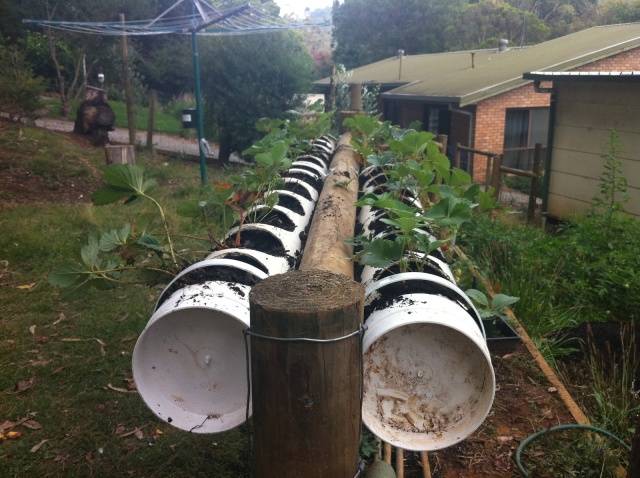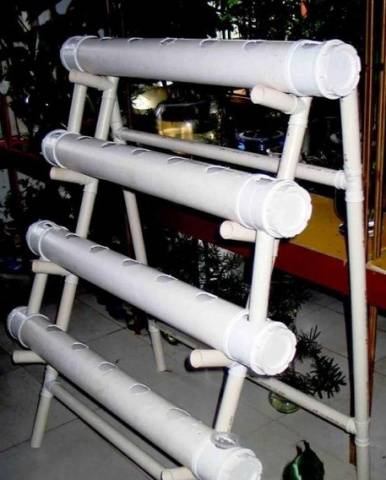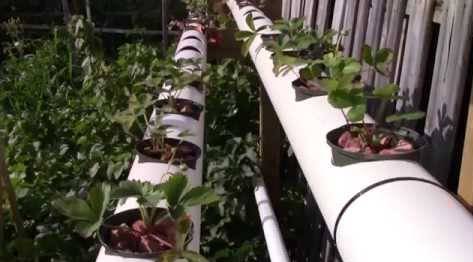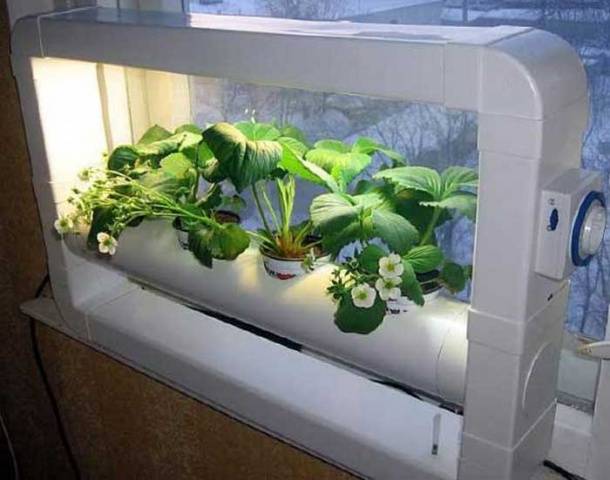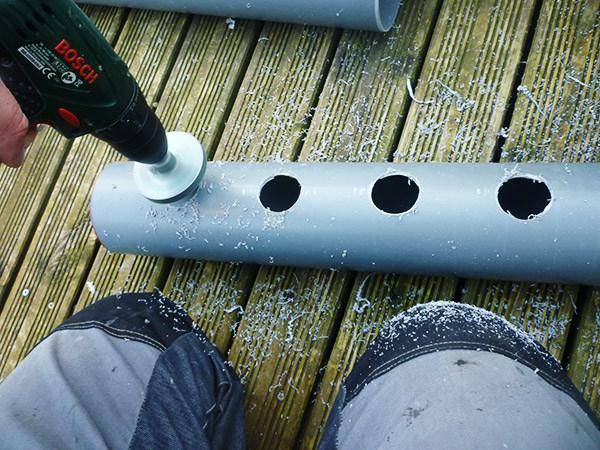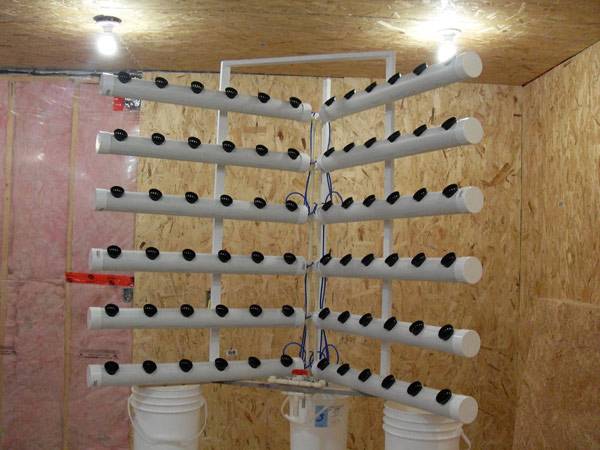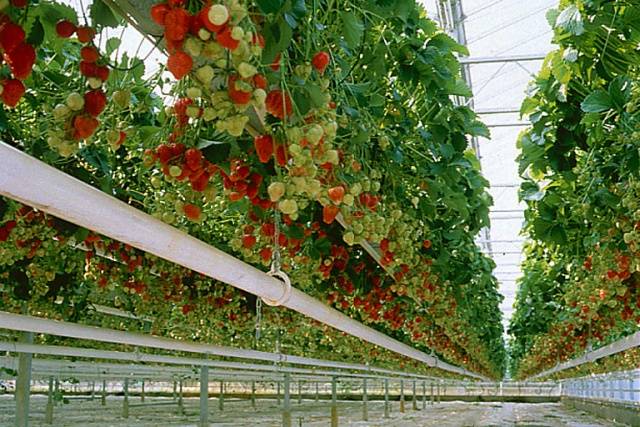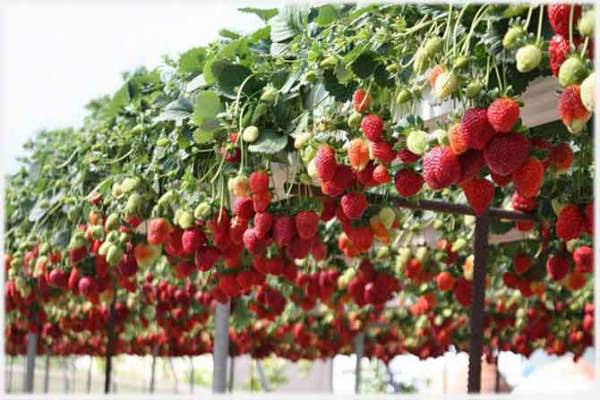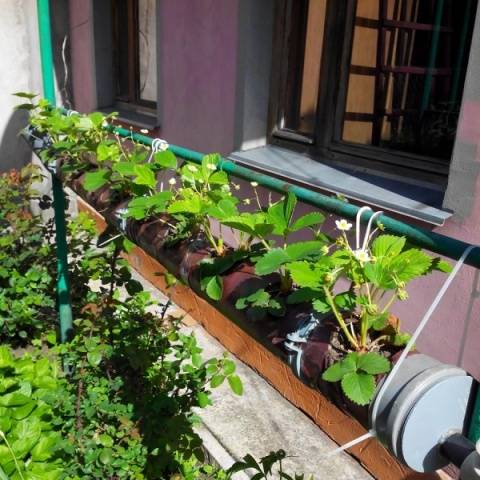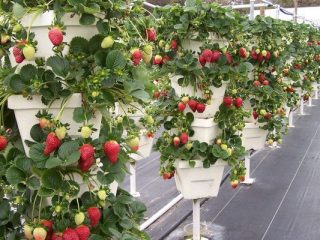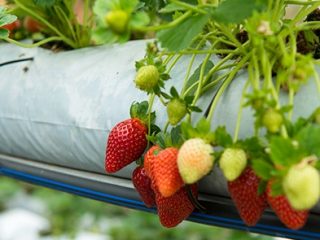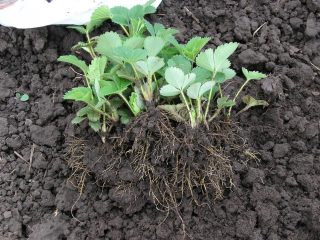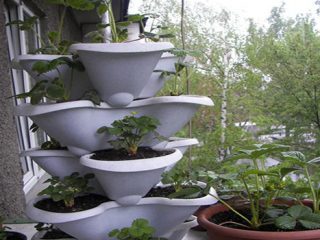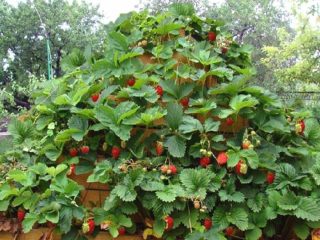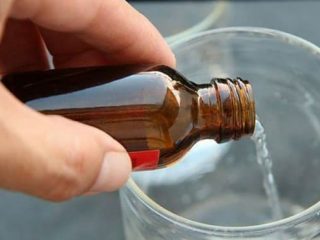Content
Every gardener dreams of planting as many plants as possible on his plot. But more often than not, the small area allocated for a vegetable garden prevents you from realizing your plans. A considerable part of the precious land is devoted to strawberries. This berry is loved by everyone, so it is found in almost every area. But even the most productive varieties do not produce more than 6 kg of berries per square meter.
To get such a harvest, the gardener will have to work hard. Strawberries cannot be called a labor-intensive crop. Repeated weeding, watering in dry weather, mandatory fertilizing, removal of whiskers - all this forces the gardener to bend over to the treasured bushes more than once.
There are many ways to reduce labor costs and save space. For example, growing strawberries in a pyramid from car tires or also in a pyramid, but already built from boards. Each of these methods has its drawbacks. Tires are not safe for humans; their use can make the grown berries harmful to health.Wooden pyramids have their own disadvantage - wood is short-lived; in conditions of high humidity it lasts only a few years.
Advantages of horizontal beds
A method practiced by many gardeners is growing strawberries in tubes horizontally devoid of these shortcomings. Polyvinyl chloride is absolutely safe for humans at open ground temperatures, and its service life is more than 50 years.
With this method, labor-intensive weeding is eliminated. Fertilizing is carried out purposefully and gives maximum results. If you install drip irrigation, the effort to care for such a strawberry plantation can be reduced to a minimum. When planting strawberries in PVC pipes horizontally, it is much easier to collect berries; the process of removing the whiskers is quite simple. The design itself takes up little space. It can easily be moved to any new place, and it can be installed where, in general, nothing can grow. Horizontal pipes can be reinforced even near a fence.
Strawberries have certain biological characteristics that allow them to be grown in confined spaces. It has a fibrous compact root system. The maximum length of strawberry roots is 30 cm. Very rarely their length reaches 50 cm. The feeding area of this berry is also small. All this allows you to successfully grow strawberries in pipe of sufficiently large diameter.
It is possible to grow this berry completely without soil - hydroponic method. This method is suitable for closed ground and the use of artificial lighting.
Strawberries and hydroponics
Principle hydroponics – growing plants using nutrient solutions without the use of traditional soil. Artificial soil based on coconut substrate, expanded clay, vermicult and even ordinary gravel is often used.
When growing strawberries using hydroponics, you can do without it. The nutrient solution can be supplied to the plants by force using a special pump or without it by capillary means. We enjoy eating strawberries grown this way in Holland and Spain in the off-season.
There are ready-made mixtures available for sale intended for growing strawberries using hydroponics. It is enough to dilute these mixtures according to the instructions with settled, clean water and ensure their supply to the roots in the required mode.
Forced feeding is provided by a pump with a power suitable for the number of plants available. To use hydroponics, strawberries need to be grown in some kind of container. Large-diameter PVC pipes are most suitable for this. In such a pipe it is easy to circulate the nutrient solution. They are also good for growing strawberries in regular soil.
Horizontal bed - instructions for creating
Necessary materials and tools: PVC pipes of two diameters - large, with a diameter of 150 mm and small, with a diameter of 15 mm, a drill with a large nozzle, plugs, fasteners.
- We determine the length of the pipes and their number.We cut the pipes into pieces of the required length.
- On one side of the pipe we cut holes in a row with a diameter of at least 7 cm. The distance between the edges of the holes is about 15 cm.
- We install plugs at each end of the large pipe. If the pipes are intended for growing strawberries using hydroponics, you will need inlet and outlet devices for the nutrient solution. The places where they connect to the large pipe must be sealed so that the solution does not leak out.
- We assemble the bed by connecting the pipes together using fasteners.
- If the structure is intended for growing strawberries using a nutrient solution, install pots for the bushes and check the system for leaks.
- If we grow strawberries in such pipes using soil, we pour it into the pipes.
Soil taken from a garden bed will not work, especially if plants from the nightshade family, such as potatoes or tomatoes, were previously grown on it.
Preparing turf soil
We cut pieces of turf on virgin soil. We stack the squares of turf with grass next to each other, constructing a cube. Each layer must be moistened with a solution of ammonium nitrate at the rate of 20 g per 10 liters.
We cover the pile with black spunbond, which allows moisture and air to pass through, but does not allow grass to grow inside the pile. In one season, wonderful turf soil will be ready, which is not only perfect for growing strawberries in horizontal or vertical beds, but also for sowing any seeds for seedlings.
If there is no opportunity or time to make turf soil, you can limit yourself to a mixture of peat and forest soil from under deciduous trees. Such soil is fertile and slightly acidic - just what is needed for strawberries.
- With the hydroponic growing method, a pump is connected to the pipes, which will supply a nutrient solution to the roots of the plants. An artificial substrate is placed at the bottom of each pot and strawberry bushes are planted. Then a nutrient solution is supplied to them.
- With the usual method, soil is poured into the pipes, a drip irrigation system is connected, and plants are also planted.
How to grow strawberries at home in winter is shown in the video:
Selection of varieties
For growing strawberries hydroponic Day-neutral varieties are suitable in this way. Such strawberries will grow throughout the year and will not require intensive additional lighting in the winter. Strawberries, even remontant ones, cannot bear fruit continuously. Plants require at least a short rest period. Therefore, such strawberries bear fruit in waves. Warning! With such an intensive growing method, plants quickly become depleted and require frequent replacement.
Varieties for year-round cultivation
Elizabeth 2
Produces very large, tasty and transportable berries. Can bear fruit on young rosettes. The variety quickly depletes and requires annual replacement.
Honey
The variety is specially adapted for growing in a greenhouse. The taste corresponds to the name - the berries are very sweet. It is stored for a long time and transported well without changing the quality of the berries. Berries need to be picked when they are fully ripe.
Albion
Large-fruited variety with berries of high taste. Very fragrant strawberry.This variety is resistant to diseases and undemanding to growing conditions. It is considered the most suitable for growing indoors.
To grow strawberries in a pipe filled with soil, these varieties are also quite suitable. But they will be more profitable ampel varieties of strawberries.
Geneva
An excellent American variety, tasty and very productive. With proper care it can produce 3 kg of berries.
Alba
An Italian variety that appeared in Russia relatively recently. It has spindle-shaped bright red berries, tasty and juicy. An interesting feature of this particular variety is the same size of berries throughout the season; they do not become smaller even at the last harvest.
Caring for a horizontal ridge
Caring for strawberries planted in horizontal beds made of PVC pipes consists of watering as needed and fertilizing once every two weeks with a weak solution of complex mineral fertilizer.
Plants must devote all their strength to producing a crop.
For the winter, it is better to remove the horizontal beds from their support and lay them on the ground so that the strawberries do not die from frost.
Conclusion
Growing strawberries in horizontal beds made of polyvinyl chloride pipes is a promising method that increases the yield per unit area and makes the gardener’s work easier.
